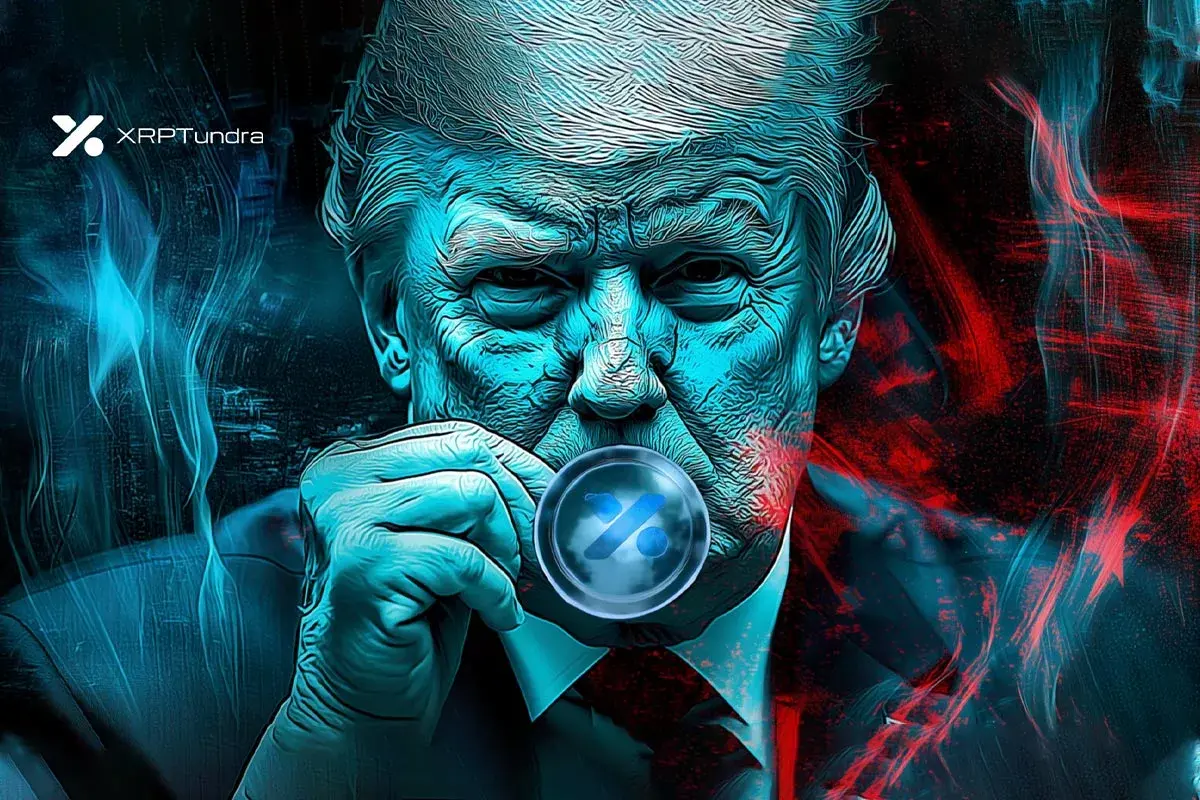Trump Cryptocurrency Policies Boost XRP Tundra’s Arctic Appeal

The regulatory conversation around digital assets in Washington has turned sharply practical. Within months of retaking office, President Donald Trump has replaced enforcement ambiguity with explicit direction—reversing anti-crypto stances, codifying stablecoin oversight, and building what the White House now calls “strategic digital reserves.”
Projects able to demonstrate on-chain accountability stand to benefit most. Among them, XRP Tundra — a verified dual-chain presale linking the XRP Ledger and Solana — has drawn attention for matching the administration’s new preference for audited mechanics and transparent liquidity.
Policy Shift Favors Verified Infrastructure
Trump’s January order, Strengthening American Leadership in Digital Financial Technology, revoked prior CBDC initiatives and created a Presidential Working Group on Digital Asset Markets. Its brief: draft unified regulatory guidance across agencies within 180 days.
March brought the Strategic Bitcoin Reserve, directing federal custodians to hold — rather than liquidate — seized crypto assets, a move tracked in Latham & Watkins’ policy tracker and Galaxy Research.
Then, in July, Trump signed the GENIUS Act, the first federal stablecoin law requiring one-to-one backing and third-party audits. Together with the DOJ’s decision to disband its crypto-enforcement unit, these actions define a new baseline: legality through verification rather than prosecution.
How Tundra’s Architecture Fits the Rules
XRP Tundra was built for that environment. It operates a dual-token model: TUNDRA-S on Solana manages utility and yield, while TUNDRA-X on the XRP Ledger governs reserves and protocol voting.
The ongoing Phase 6 presale prices TUNDRA-S at $0.1 with a 14% bonus and a $0.05 reference for TUNDRA-X. Listing values are locked at $2.5 and $1.25, giving early participants a defined 25× multiple regardless of market volatility.
Smart-contract integrity is validated through Cyberscope, Solidproof, and FreshCoins audits, while team identity is confirmed in Vital Block’s KYC certificate. This mirrors the very verification standards the GENIUS Act now requires of US stablecoin issuers.
Cryo Vault Staking and GlacierChain Expansion
Tundra’s upcoming Cryo Vaults extend the compliance-ready logic into yield. Holders will be able to lock TUNDRA-S for fixed periods — 7, 30, 60, or 90 days — to earn APY drawn from trading-fee revenue, not token inflation. Longer commitments receive higher rewards, aligning incentives toward stability rather than churn.
Vaults integrate directly with Meteora’s DAMM V2 liquidity engine on Solana, where dynamic fees begin near 50 % and decrease automatically as liquidity stabilizes. Fees collected there feed Cryo Vault distributions, producing a transparent flow from market activity to yield — a design likely to meet future US disclosure requirements for on-chain income products.
Beyond staking, development documents outline GlacierChain, an XRPL Layer-2 expansion that will synchronize Solana liquidity with XRP-based governance.
Thanks to GlacierChain, users get access to side-ledger validators that can settle Solana transactions onto XRPL and governance relays. This helps enable TUNDRA-X holders to cast their votes from XRP wallets directly.
Also, there are planned modules that include native lending and synthetic-asset issuance. All of these will emerge once the project launches Layer-2. It is the combination of Cryo Vaults and GlacierChain that allows users to get a DeFi structure that is transparent enough to get the nod from Washington.
Arctic Spinner Features Transparent Rewards in Real Time
The Arctic Spinner model has been the essence of participation, keeping engagement in the Tundra community active through automation. As users buy a qualifying amount of Tundra S tokens, they get a contract-controlled reward wheel. Spinning that will offer rewards depending on the tiers.
- Tier A ($100–$499) offers up to 10% bonuses
- Tier B ($500–$999) increases the bonus amount to 20%;
- Tier C ($1,000 +) gives users three more spins, each having higher odds.
There is also a fourth spin, the daily spin, which invites non-purchasing users to engage.
As Crypto Tech Gaming showed in its walkthrough, all results are executed on-chain with no custodial handling or off-chain randomness. The Spinner functions as a self-auditing engagement tool — an example of automated disclosure in action rather than an after-the-fact report.
Regulation Meets Execution
While policymakers debate implementation of the GENIUS Act and the Bitcoin Reserve framework, Tundra is already running on the same principles: provable reserves, traceable flows, and public accountability. The project has attracted over 11,600 participants and $1.2 million in verified contributions, distributing around $10,000 through the Arctic Spinner system.
For investors aligning strategy with policy momentum, the overlap is clear. Trump’s government is codifying transparency; Tundra has built it into code.
The policy shift is written in law. Tundra’s version is already on-chain:
Website: xrptundra.com
Medium: medium.com/@xrptundra
Telegram: t.me/xrptundra
X: x.com/Xrptundra
Contact: Tim Fénix — [email protected]
- How Little Pepe’s Community and Tokenomics Are Powering Its Explosive Growth
- FY Energy and the New Logic of Retail Mining
- Discussing XRP, BNB, and BTC Mining: How to Increase Passive Income In 2025
- Blockchain Life 2025 Dubai: Global Crypto Leaders Unite with Akon’s Exclusive Performance
- FY Energy’s Crypto Mining Solutions Unlock Two Modes of Passive Income
For PR & Sponsored Content Reach us :






